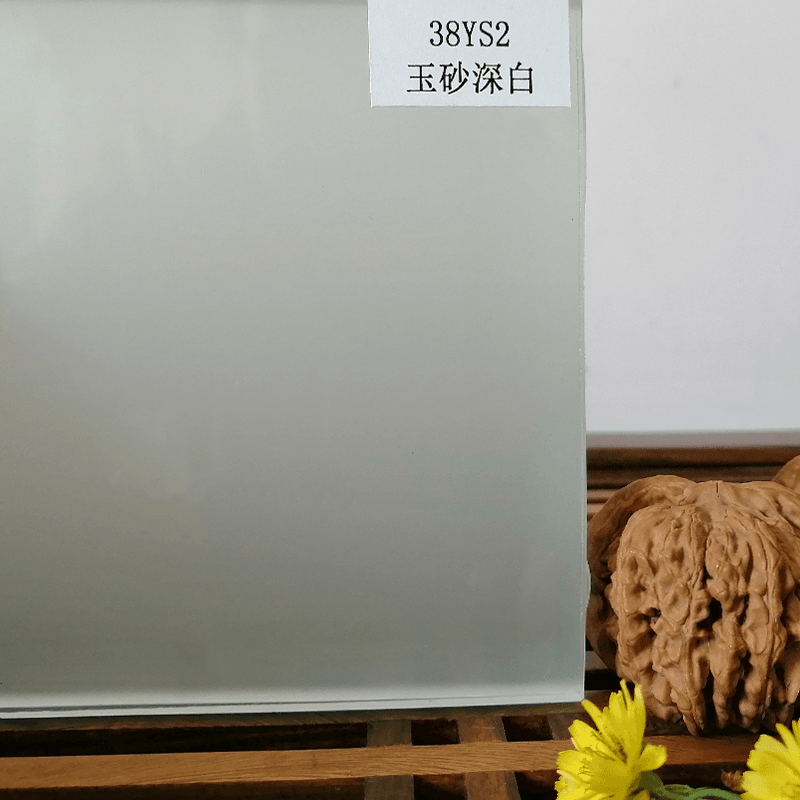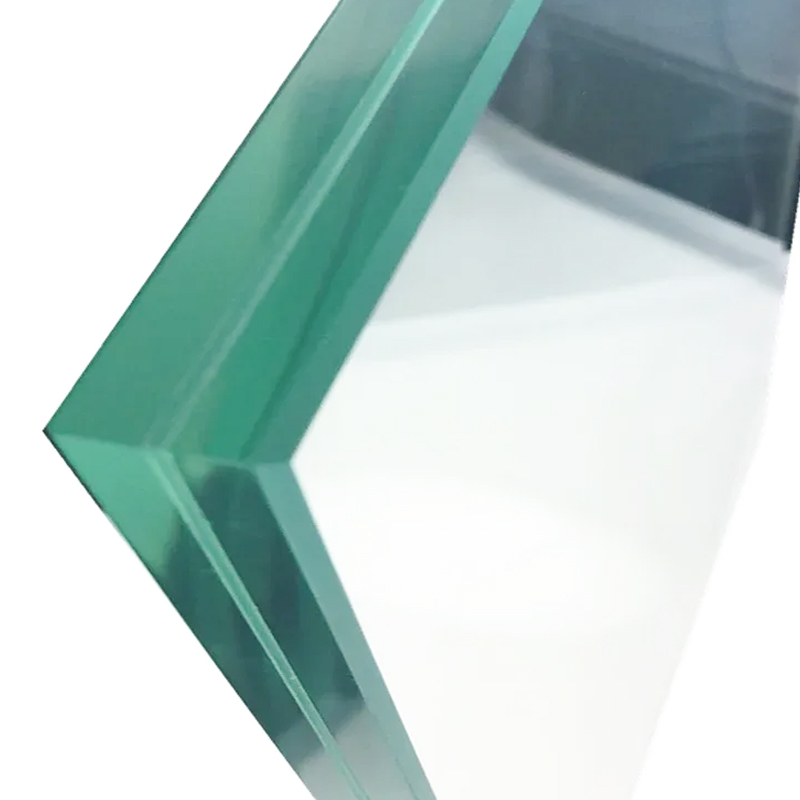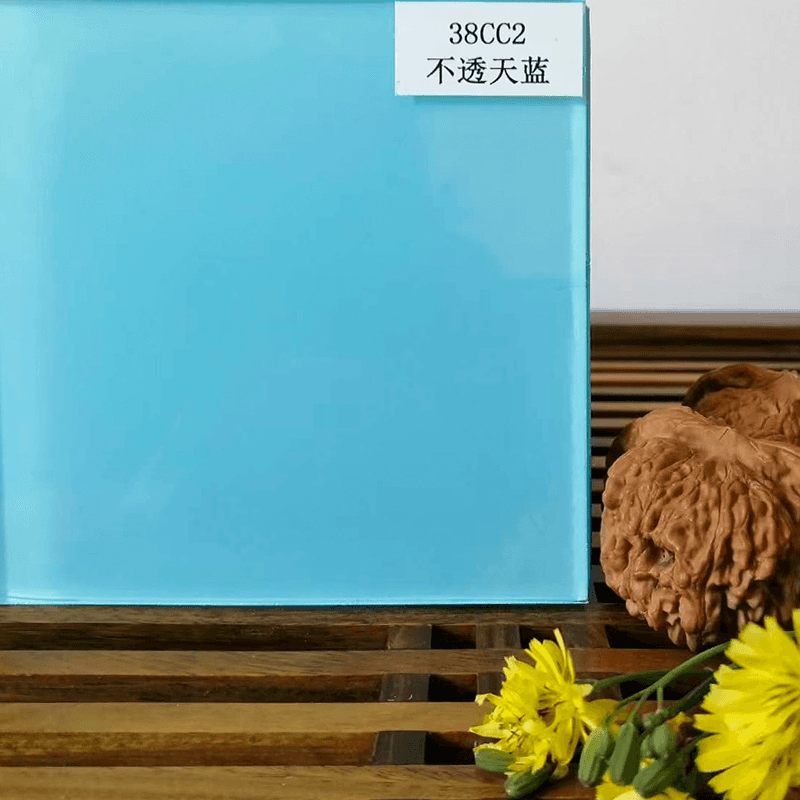language
1.Introduction to EVA Film
(1) Definition
EVA Film, namely ethylene-vinyl Acetate copolymer film, is a thermoplastic film obtained by the copolymerization of Ethylene and Vinyl Acetate under certain conditions. In its chemical structure, the ethylene segments endow the film with flexibility and transparency, while the vinyl acetate segments affect the film's adhesiveness, elasticity and other properties. By adjusting the ratio of ethylene to vinyl acetate, EVA films with different properties can be obtained to meet the demands of various application scenarios.
(2) Structural features
The molecular structure of EVA Film presents unique characteristics. The ethylene units form a linear main chain structure, providing the basic framework of the film and endowing the film with certain flexibility and mechanical strength. The vinyl acetate unit is connected to the main chain as a side chain, and the change in its content has a significant impact on the performance of the film. When the content of vinyl acetate is low, the performance of EVA Film is closer to that of polyethylene, with relatively higher hardness and rigidity. With the increase of vinyl acetate content, the flexibility, elasticity and adhesion to other materials of the film are enhanced, while the transparency will also change. This adjustable molecular structure is one of the key factors for the wide application of EVA Film in many fields.
2. Characteristics of EVA Film
(1) Physical properties
Softness and elasticity: EVA Film has excellent softness and elasticity, which enables it to adapt to various shapes and surfaces. In fields such as packaging and construction, it can easily adhere to different objects, providing good protection and sealing effects. For example, in food packaging, it can tightly wrap the food to prevent it from being bumped or squeezed from the outside.
Transparency EVA Film usually has a relatively high transparency, especially in some applications with high requirements for optical performance, such as packaging materials in the field of solar photovoltaic. The highly transparent EVA Film can effectively reduce the reflection and absorption of light, enabling more sunlight to pass through the film and reach the solar cells, thereby improving the photoelectric conversion efficiency of photovoltaic modules.
Tear resistance: It has a relatively high tear resistance and is not prone to cracking when subjected to external force pulling. In industrial packaging, for the packaging of some sharp or angular items, EVA Film can withstand a certain degree of external force, protect the internal items from damage, and extend the service life of the packaging.
(2) Chemical properties
Chemical corrosion resistance: EVA Film has certain resistance to many chemical substances and can resist the erosion of common acid and alkali solutions, organic solvents, etc. In the field of building waterproofing, it can be used in underground projects, roof waterproofing, etc. It maintains stable performance and plays a waterproofing role for a long time in damp environments that may come into contact with chemical substances.
Stability: At normal temperature, EVA Film has good chemical stability and is not prone to chemical reactions and deterioration. However, under extreme conditions such as high temperature and high humidity, its performance may be affected to a certain extent. Therefore, in practical applications, it is necessary to select the appropriate EVA Film products according to specific environmental conditions and take corresponding protective measures.
(3) Adhesive properties
EVA Film has good adhesion to a variety of materials, especially to common materials such as glass, metal and plastic. In the manufacturing of safety glass, EVA Film, as an intermediate interlayer, can be closely bonded with the two layers of glass to form a solid structure. When the glass is impacted and broken, the EVA Film can bond the broken glass fragments together to prevent splashing and injuring people, greatly enhancing the safety of the glass. This excellent bonding property enables EVA Film to be widely used in the manufacturing of composite materials, lamination processes, etc.
3. The production process of EVA Film
Raw material preparation
Ethylene and vinyl acetate: As the main raw materials, their quality and purity directly affect the performance of EVA Film. High-purity ethylene and vinyl acetate can ensure the smooth progress of the polymerization reaction and generate copolymers with stable performance. When choosing raw materials, it is necessary to strictly control their impurity content to ensure compliance with production requirements.
Additives: To improve certain properties of EVA Film, some auxiliary materials are usually added. For instance, adding antioxidants can prevent the film from aging due to oxidation during processing and use, thereby extending its service life. Ultraviolet stabilizers can enhance the film's resistance to ultraviolet rays, making it less likely to fade and degrade when used in outdoor environments. Plasticizers can further enhance the flexibility and plasticity of films, making them easier to process and shape.
(2) Polymerization reaction
Reaction principle: Under the action of an initiator, ethylene and vinyl acetate undergo free radical polymerization to form EVA copolymer. During the reaction process, the initiator decomposes to produce free radicals, which react with ethylene and vinyl acetate monomers to form chain free radicals. These chain free radicals continuously grow and eventually generate EVA polymers with certain molecular weights and structures.
Reaction condition control: The temperature, pressure and reaction time of the polymerization reaction have a significant impact on the performance of EVA copolymer. Generally speaking, appropriately increasing the reaction temperature can accelerate the reaction rate, but excessively high temperatures may cause the molecular weight distribution of the polymer to broaden, affecting the product performance. The control of pressure is related to the phase state of the reaction system. Appropriate pressure can ensure that the reaction proceeds under ideal conditions. The length of the reaction time determines the degree of polymerization of the polymer, which in turn affects its performance and requires precise control based on the production target.
(3) Forming processing
Extrusion blow molding method: The EVA resin particles obtained through polymerization are heated and melted, and the molten material is extruded into tubular film bubbles through a screw extruder. Then, compressed air is introduced into the membrane bubble to make it expand laterally. At the same time, the membrane bubble is stretched longitudinally through a traction device. Under the combined effect of expansion and stretching, a film with a certain thickness and width is formed. Finally, after processes such as cooling and shaping, and winding, the EVA Film product is obtained. This method has a relatively high production efficiency and is suitable for large-scale production of films of various thicknesses. It is widely used in packaging, agriculture and other fields.
Casting method: The molten EVA material is extruded through a T-shaped die head and cast in sheet form onto the cooling roller, where it is rapidly cooled and shaped to form a film. The films produced by the casting method have good thickness uniformity and high surface flatness, and are suitable for applications with high requirements for film quality, such as protective films in the optical field and solar photovoltaic encapsulation films. However, this method has a relatively high equipment cost and a relatively slow production speed.

4. Application fields of EVA Film
(1) Packaging field
Food packaging: EVA Film is widely used in food packaging due to its good flexibility, transparency and hygiene. It can tightly wrap food, prevent it from getting damp, oxidized and contaminated by microorganisms, and extend the shelf life of food. Meanwhile, the highly transparent EVA Film enables consumers to clearly see the appearance of the food inside the package, enhancing the appeal of the product. For example, EVA Film is widely used in the packaging of foods such as bread, pastries and meat.
Industrial product packaging: For some industrial products, such as electronic products and precision instruments, the anti-static performance and buffering performance of EVA Film can effectively protect the products from static damage and collision impact during transportation and storage. Its excellent sealing performance can also prevent dust, moisture and other substances from entering the packaging interior, ensuring the stable quality and performance of the product.
(2) The field of architecture
Safety glass interlayer: In the manufacturing of building safety glass, EVA Film plays a key role as an intermediate interlayer material. When the glass is broken by external force impact, EVA Film can stick the glass fragments together to prevent them from flying and injuring people, improving the safety of the glass. This kind of safety glass is widely used in the doors, Windows, curtain walls and other parts of buildings, providing safety guarantees for people's lives and work.
Waterproof membrane: EVA Film has excellent waterproof performance and weather resistance, and is often used to make building waterproof membranes. It can be combined with other materials to form multi-layer waterproof membranes, which are used in waterproofing projects for roofs, basements, bathrooms and other areas. Under complex building structures and different climatic conditions, EVA Film waterproof membranes can effectively prevent water infiltration for a long time and protect the structural safety of buildings.
(3) Solar photovoltaic field
Photovoltaic module packaging: EVA Film is one of the key materials for the packaging of solar photovoltaic modules. During the production process of photovoltaic modules, EVA Film is placed between the solar cells, glass and backsheet. Through the heating lamination process, EVA Film is closely bonded with the cells, glass and backsheet to form a sealed whole. The high transparency of EVA Film can ensure that more sunlight passes through and improve the photoelectric conversion efficiency of photovoltaic modules. Its excellent flexibility and anti-aging performance can adapt to different environmental conditions, protect the solar cells from erosion by external factors, and extend the service life of photovoltaic modules.
Thin-film solar cells: In the manufacturing of some thin-film solar cells, EVA Film can also be used as a buffer layer and adhesive between the electrode and the semiconductor material, playing a role in improving the performance of the cells and enhancing their stability.
(4) Agricultural field
Agricultural greenhouse Film: EVA Film has excellent heat preservation, light transmission and anti-fogging performance, and is very suitable for making agricultural greenhouse film. In greenhouse cultivation, EVA greenhouse film can effectively maintain the temperature inside the greenhouse, reduce heat loss, and provide a suitable growth environment for crops. Meanwhile, high light transmittance ensures sufficient light, promoting the photosynthesis of crops. The anti-fogging performance can prevent water droplets from forming on the inner surface of the film, avoid the refraction and occlusion of light by water droplets, improve the utilization rate of light, and reduce the occurrence of pests and diseases.
Agricultural product preservation packaging: By taking advantage of the preservation characteristics of EVA Film, it can be used for the preservation packaging of agricultural products. For example, in the packaging of fruits and vegetables, EVA Film can regulate the gas environment inside the packaging, reduce the oxygen content, increase the carbon dioxide concentration, inhibit the respiration of agricultural products, delay their ripening and rotting processes, and maintain the freshness and quality of agricultural products.
5. The current market situation and development trend of EVA Film
Market size and growth trend
With the continuous increase in the demand for EVA Film in various industries, the global market size of EVA Film shows a steady growth trend. Driven by the main application fields such as packaging, construction and solar photovoltaic, the output and consumption of EVA Film have continued to rise. Especially in emerging economies, with the acceleration of industrialization and urbanization, the demand for packaging materials, building materials and clean energy has grown rapidly, further promoting the development of the EVA Film market. It is expected that the global EVA Film market will still maintain a relatively high growth rate in the coming years.
(2) Technological innovation and development direction
High-performance product research and development: To meet the increasingly strict performance requirements of different industries, EVA Film manufacturing enterprises continuously increase their investment in research and development, and are committed to developing high-performance EVA Film products. For example, develop EVA Film with higher transparency, stronger anti-aging performance and better bonding strength to enhance its application effect in fields such as solar photovoltaic and high-end packaging. Meanwhile, by improving the production process and formula, the product cost can be reduced and the market competitiveness of the product can be enhanced.
Environmentally friendly product development: Against the backdrop of the increasingly enhanced environmental awareness, the development of environmentally friendly EVA Film has become an important trend in the industry's development. On the one hand, research degradable EVA Film to reduce the pollution of traditional plastic films to the environment; On the other hand, optimize energy consumption and waste emissions during the production process to achieve green production. At present, some enterprises have successfully developed partially degradable EVA Film products and gradually launched them to the market, attracting the attention and favor of consumers.
(3) Competitive Landscape and Market Challenges
Competitive landscape: The global EVA Film market is highly competitive, presenting a diversified competitive landscape. International large-scale chemical enterprises have occupied a dominant position in the high-end market with their advanced technology, rich product lines and strong brand influence. Some emerging regional enterprises have been competing with international enterprises in the mid-to-low-end market by constantly improving product quality and reducing production costs, and gradually expanding their market share. Furthermore, with the continuous development of the market, some cross-border enterprises have also begun to get involved in the EVA Film field, further intensifying the market competition.
Market challenges: The EVA Film market is confronted with challenges such as fluctuations in raw material prices, changes in market demand, and increasingly strict environmental protection regulations. The prices of raw materials such as ethylene and vinyl acetate are greatly influenced by factors like the international crude oil market and geopolitics. The instability of prices has brought difficulties to the cost control of production enterprises. Meanwhile, with the continuous changes in market demand, the performance and quality requirements for EVA Film are also constantly increasing. Enterprises need to adjust the product structure and production process in a timely manner to meet the market demand. Furthermore, the increasingly strict environmental protection regulations have put forward higher requirements for the production and use of EVA Film. Enterprises need to increase investment in environmental protection and develop environmentally friendly products to cope with the challenges brought by environmental protection policies.





